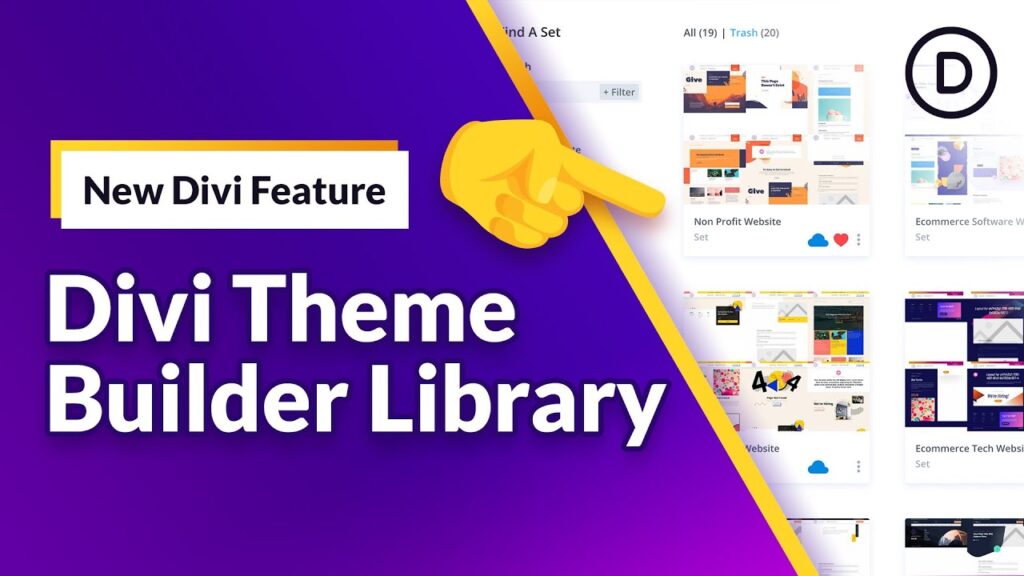Recommended
Here are some highly recommended wordpress themes
THEMES
Two of the top most recommended WordPress themes are

Recommended
Alex Best

Developed by Elegant Themes, Divi is a versatile and powerful theme with a drag-and-drop builder that allows you to create virtually any type of website. It comes with a wide range of pre-designed templates and customization options, making it suitable for both beginners and advanced users

Astra is a lightweight and highly customizable theme known for its speed and performance. It integrates well with popular page builders like Elementor and Beaver Builder, and it offers a variety of starter templates and customization options to help you build your website quickly and efficiently
What's a WordPress theme?
A WordPress theme is a collection of files, templates, and stylesheets that work together to define the appearance, layout, and functionality of a WordPress website. In essence, a theme controls the visual presentation of your website, allowing you to change its design without altering the underlying content or code. Here’s a detailed breakdown of what a WordPress theme is and how it works
1. Visual Design and Layout
Appearance: The theme dictates the look and feel of your website, including aspects like color schemes, typography, and layout structure. It determines how your content is displayed, from the header and footer to the main content area and sidebars
Templates: WordPress themes come with various templates that define different page layouts, such as the homepage, blog posts, pages, archives, and search results. Each template specifies how content should be arranged and displayed on those pages.
2. Functionality
- Built-in Features: Many themes include built-in features and functionality, such as custom widgets, menus, sliders, and page builders. These features allow you to enhance your site’s capabilities without needing to install additional plugins.
- Customization Options: Themes often provide customization options through the WordPress Customizer, allowing you to tweak the design and functionality without touching any code. Options might include adjusting colors, fonts, header images, background images, and more.
3. Responsive Design
- Mobile-Friendly: Modern WordPress themes are typically responsive, meaning they automatically adjust their layout and design to look good on various screen sizes, from desktops to smartphones and tablets. This is essential for providing a good user experience on all devices.
4. Extensibility
- Child Themes: A child theme is a sub-theme that inherits the functionality and styling of its parent theme. It allows you to make customizations without altering the parent theme’s files, ensuring that updates to the parent theme won’t overwrite your changes.
- Plugin Compatibility: Themes often support and are compatible with various plugins, enabling you to add additional features such as SEO tools, social media integration, and e-commerce functionality.
5. Content Management
- Content Presentation: While themes control the presentation of your content, they don’t alter the content itself. You can switch themes without losing any of your posts, pages, or media files. However, the new theme may display content differently depending on its design and layout settings.
- Custom Post Types and Formats: Some themes support custom post types (like portfolios, testimonials, or products) and post formats (such as galleries, quotes, or videos), allowing you to manage and display different types of content in unique ways.
6. Updates and Support
- Regular Updates: Quality themes are regularly updated by their developers to ensure compatibility with the latest version of WordPress and to address security vulnerabilities and bugs.
- Support and Documentation: Many premium themes come with dedicated support and detailed documentation to help you set up and customize your site. Free themes might offer limited support, but they often have active user communities.
7. Theme Examples
- Default Themes: WordPress comes with default themes like “Twenty Twenty-Three,” which are designed to be versatile and beginner-friendly.
- Premium Themes: Paid themes often offer more advanced features, extensive customization options, and premium support. Examples include Divi, Astra, and Avada.
- Niche Themes: Some themes are designed for specific industries or website types, such as e-commerce (e.g., WooCommerce themes), portfolios, blogs, or corporate sites.
Table of Contents
- What's a WordPress theme
- Visual Design and Layout
- Functionality
- Responsive Design
- Extensibility
- Content Management
- Updates and Support
- Theme Examples
